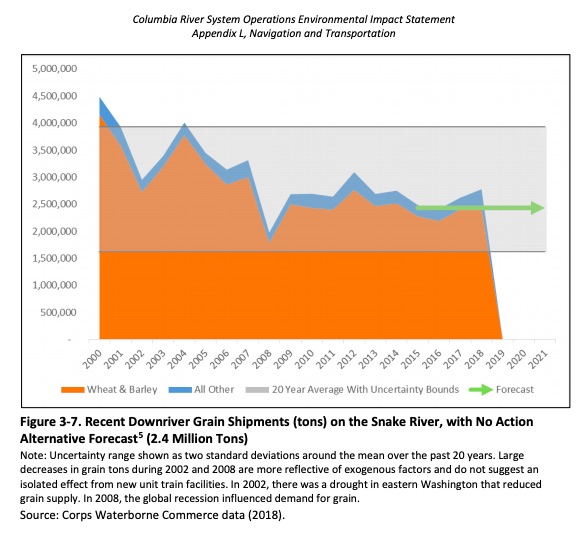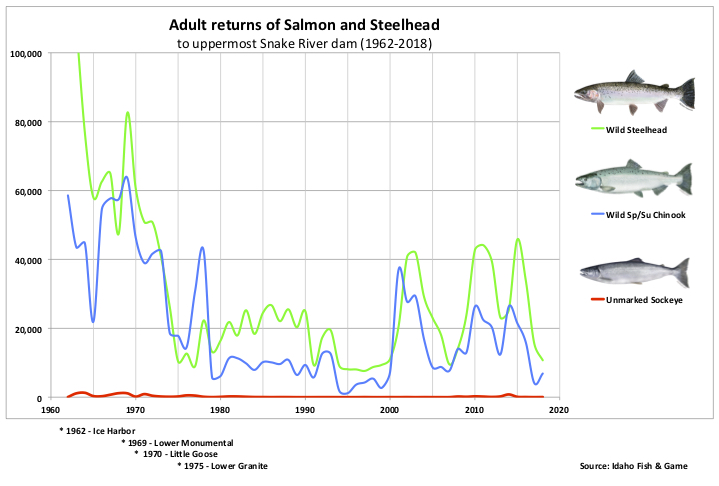forum
library
tutorial
contact

Vilsack Needs to Defend
Lower Snake River Dams
by Editorial Board
Capital Press, April 6, 2023
|
the film forum library tutorial contact |

|
Vilsack Needs to Defend
by Editorial Board
|
Whatever comes out of that mediation will still have to be approved and funded by Congress.
 There's something fishy about the "mediation" taking place at the White House.
There's something fishy about the "mediation" taking place at the White House.
This mediation, which is held in secret, is an effort by the White House Council on Environmental Quality and the Federal Mediation and Conciliation Service to come up with a plan for the four lower Snake River dams.
The dams have been the target of lawsuits for decades, with environmentalists claiming they hurt the endangered populations of fish that spawn upriver.
A federal judge, Michael Simon, tapped the brakes on the litigation and asked the Inland Ports and Navigation Group to meet with Native Americans, environmentalists and others.
Hopefully, someone in those meetings has read a copy of the U.S. Constitution. In it, the legislative branch -- Congress -- writes laws and controls the nation's pursestrings. Whatever comes out of that mediation will still have to be approved and funded by Congress.
Critics sniff that the welfare of the fish trumps the welfare of the people and industries that depend on the dams. They are wrong. Besides, the fish issues have been thoroughly addressed.
All four dams have fish ladders that allow the salmon and steelhead to pass. The water is cooled using water from the Dworshak Dam upstream to benefit the fish. The turbines have also been modified to allow more fish to pass.
Enough about fish.
The four dams are critical to the Pacific Northwest economy. They produce 1 gigawatt -- that's 1 billion watts -- enough electricity to power 800,000 homes. It would take a nuclear reactor to replace that amount of electricity. Either that, or it would take 3.125 million solar panels, according to the U.S. Department of Energy.
Farmers depend on the locks at the dams to barge wheat and other crops valued at $3 billion downriver. Without the dams and their locks, the river would be impassable to barges, and 10 million tons of wheat -- 40% of the nation's wheat crop -- and other grains would have to be transported by truck and railroad to export terminals downstream. Better get ready to build lots of roads and rails because what's there now is fully inadequate.
Farmers also depend on the water behind the dams to irrigate 35,000 acres of crops. Without that water, only dryland farming would be possible, greatly reducing yields.
Last week, a group of concerned agricultural organizations called on Secretary of Agriculture Tom Vilsack to intervene in the secret talks and provide a reality check. He refused, saying only that he is monitoring them.
Really. Vilsack, who is from Iowa, is known as someone who understands agriculture.
Iowa's farmers -- and their colleagues across the Midwest -- rely on the 29 locks and dams on the Mississippi River to get their crops downstream.
If environmentalists wanted to remove those locks and dams, Vilsack would being standing up on his hind legs and protesting at the top of his lungs.
Yet he's silent on the lower Snake River dams, an issue with the Pacific Northwest's economy and tens of billions of taxpayer dollars at stake.
Vilsack could pick up the phone today and call his boss at the White House and put an end to this nonsense.

learn more on topics covered in the film
see the video
read the script
learn the songs
discussion forum
